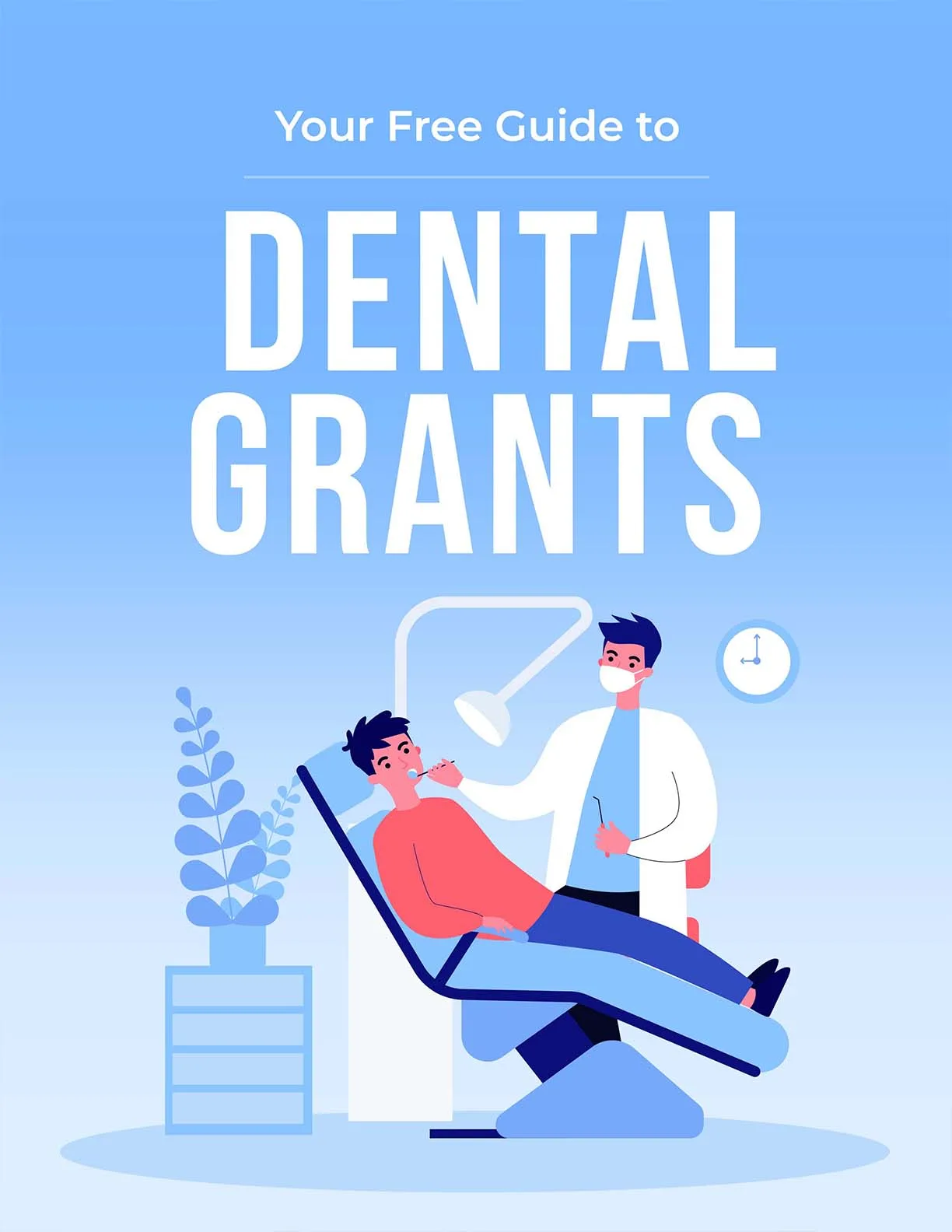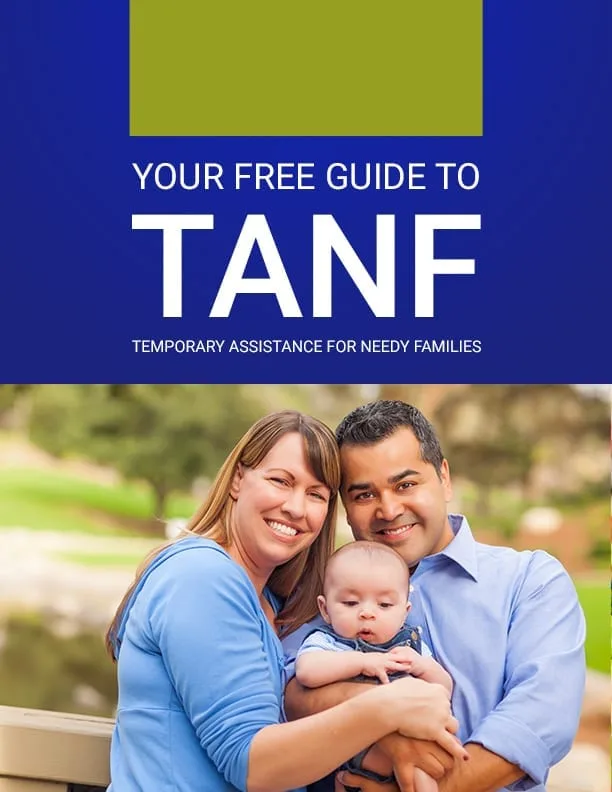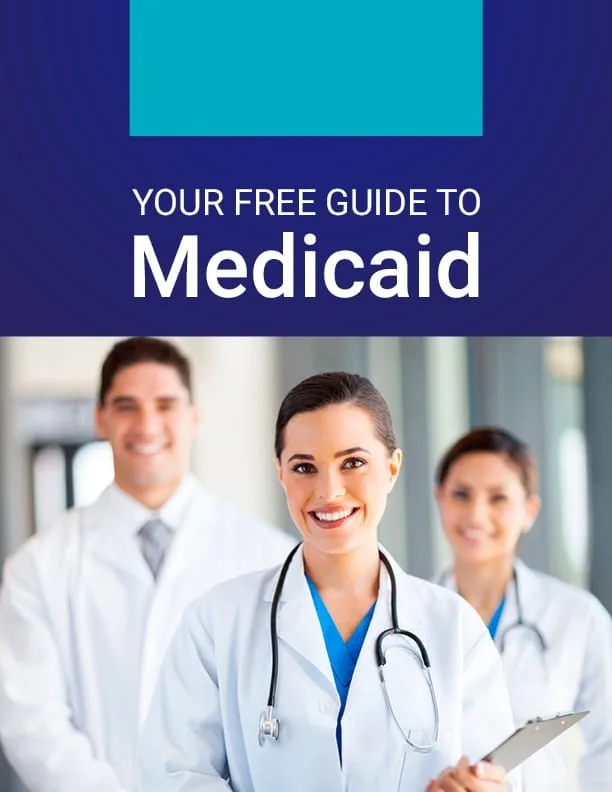Your Free Guide to Health Insurance
Your Free Guide to Health Insurance
We are privately owned and not affiliated with the government in any way or form.

What is Health Insurance?
Staying healthy is important, but health care can be expensive, especially if you suffer from an illness or accident. On average, a 3-day hospital stay in the U.S. can cost an average of $30,000. Without health insurance, you may be on the hook to cover the full cost of your medical care.
Navigating the U.S. health care system can feel incredibly overwhelming. There are many options to choose from, and insurance terminology leaves many Americans scratching their heads. Fortunately, we’ve created this guide to help you learn more about your health insurance options and choose a plan that will suit your and your family’s needs.
A health insurance plan is a contract between you and a health insurance company. The company agrees to pay some or all of your health care costs in exchange for monthly payments, known as premiums. How much the insurer pays, what medical expenses they pay for, and the cost of your monthly premiums depends on your specific policy details.
Therefore, it’s important to take the time to review all health insurance policy details before enrolling in an insurance plan. This may help you save more money, prepare for the future, and avoid unexpected medical costs.
Getting Health Insurance
There are several ways to get a health insurance plan. But knowing where to find them may not always be obvious. Continue reading the sections below to learn more about common ways to get health insurance.
Employer-Sponsored Insurance
Employer-sponsored health insurance is a type of insurance plan offered to workers through their employment. Typically, health insurance is part of a full-time employee benefit package. It’s also one of the most common ways to get insurance.
The Affordable Care Act requires U.S. employers with at least 50 or more full-time employees to provide affordable medical insurance coverage to at least 95% of their full-time employees and their dependents. For insurance purposes, employees who work an average of 30 hours or more are usually considered full-time workers.
Employers pay a portion of the cost of the health insurance plan, and employees pay the remaining amount, which is generally through an automatic payroll deduction. This means that most employees see the cost of their health plan deducted from their paychecks.
Here are some potential advantages of choosing an employer-sponsored health insurance plan:
- Familiar insurance companies that may provide more extensive networks
- Health insurance premiums can be deducted pre-tax
- Employers’ contributions are not taxable to employees
- They are generally more affordable than private health care plans
The drawbacks of using employer-sponsored health insurance plans can include the following:
- There may be limited plan options
- You may not be able to make changes to your plan outside of open enrollment, a special enrollment period, or a qualifying life event
Staying on a Parent’s Employer-Sponsored Health Insurance Plan
If you are 25 years of age or younger and one or both of your parents or legal guardians are enrolled in an employer-sponsored health insurance plan, the Affordable Care Act allows you to remain on the plan until you turn 26. After that, you’ll need to find your own health insurance plan. However, losing your health care coverage in this way is considered to be a qualifying life event (QLE), so you won’t need to wait for an open enrollment period to get health insurance.
The Affordable Care Act
The Affordable Care Act (ACA), often referred to as “Obamacare,” is a comprehensive health care reform law enacted in March 2010. The primary goals of the ACA are to:
- Expand access to health insurance;
- Protect patients against arbitrary actions by insurance companies; and
- Reduce health care costs.
The ACA has several key provisions designed to achieve its objectives. In its early days, it required most Americans to obtain health insurance or pay a penalty, which was intended to make coverage more affordable for everyone. Although that is no longer the case at the federal level, some states have their own requirement.
It also established health insurance marketplaces, or exchanges, where individuals and small businesses can compare and purchase insurance plans. These marketplaces provide access to subsidies in the form of tax credits to lower-income individuals and families, making health insurance more affordable.
One of the cornerstone elements of the ACA is the protection it offers to consumers. Insurance companies are no longer allowed to deny coverage or charge higher premiums based on pre-existing conditions. Additionally, the ACA requires insurance plans to cover a set of essential health benefits, including preventive services, mental health care, and prescription drugs, without cost-sharing. This comprehensive coverage ensures that individuals have access to necessary medical services without facing prohibitive costs.
Furthermore, the ACA expanded Medicaid eligibility to cover more low-income Americans, though not all states have adopted this expansion. This extension has significantly increased the number of insured individuals, providing them with access to critical health care services. Learn more about Medicaid in the sections below.
The Affordable Care Act was designed to make health insurance more accessible, affordable, and fair. By implementing a range of reforms and protections, the ACA has helped millions of Americans gain coverage and access to essential health services, contributing to a healthier, more secure populace.
Federal Health Insurance Programs

If you are a senior, are disabled, or are part of a low-income household, you may be able to enroll in a federal health insurance program at little to no cost. These health insurance plans are funded and operated by the federal (and sometimes state) government.
The following federal health insurance programs are available to qualifying individuals:
- Medicaid
- Children’s Health Insurance Program (CHIP)
- Medicare
Medicaid
Medicaid is a federal health insurance program for low-income individuals and families. This program provides health insurance for one in five Americans in the United States.
Medicaid is jointly funded by the federal and state governments. Each state and U.S. territory operates its own Medicaid program within federal guidelines. So, there is some variation between covered medical services, costs, and eligibility between state programs.
The biggest determining factor for whether a person or family qualifies for Medicaid is income. To enroll in Medicaid, you must meet your state’s income guidelines. In addition to income, you may need to meet other requirements. For example, some states might limit Medicaid eligibility to families with dependent children, disabled individuals, senior citizens, or pregnant women.
Medicaid is commonly confused with the Medicare program. However, Medicaid is designed to provide health insurance coverage for low-income individuals and families, while Medicare aids seniors and persons with disabilities. Additionally, low-income Medicare recipients may also qualify for Medicaid, and that dual eligibility can help beneficiaries through cost reduction and additional covered medical services.
To learn more about Medicaid in your state, including application requirements and coverage types, download our free Medicaid guide.
Children’s Health Insurance Program (CHIP)
The Children’s Health Insurance Program (CHIP) is another income-driven health insurance program operated by the federal government. Like Medicaid, each state and territory runs its own CHIP plan and determines many of the eligibility, coverage benefits, and costs following federal guidelines. While many states charge a monthly premium for CHIP, the amount cannot exceed 5% of your family’s income.
CHIP is available to qualifying low-income children and, in some states, pregnant women. Although you must make less than income limits to qualify for CHIP, these limits are higher than the income limits for Medicaid. Therefore, children may qualify for CHIP even if they do not qualify for Medicaid based on their family’s household income.
Some state CHIP programs require applicants to remain without insurance for a specified period before being approved for CHIP benefits. This is known as a “waiting period.” However, the Social Security Act of 2014 limited waiting periods to a maximum of 90 days.
To learn more about CHIP, including application requirements, waiting periods in each state, and coverage options, download our free CHIP guide.
Medicare
Medicare is a federal health insurance program for seniors age 65 and older and people with a qualifying disability. Qualifying disabilities include End Stage Renal Disease and any disabilities that qualify you for Social Security Disability Insurance (SSDI).
Unlike Medicaid and CHIP, your income does not determine your eligibility. However, if you are part of a low-income household, you may qualify for both Medicaid and Medicare, potentially providing you with more coverage benefits and reduced health insurance premiums.
If you qualify for Medicare, you can build your insurance plan by enrolling in various parts. There are four parts of Medicare:
- u003cspanu003ePart Au003c/spanu003e: Inpatient and hospital coverage
- u003cspanu003ePart Bu003c/spanu003e: Outpatient and general medical coverage
- u003cspanu003ePart Cu003c/spanu003e: Also known as Medicare Advantage plans, these plans offer an alternative way to get Parts A and B through private providers, with different costs and coverage options. Availability of these plans is based on where you live
- u003cspanu003ePart Du003c/spanu003e: Prescription drug coverage
Additionally, you have the option to enroll in a Medigap plan. These plans are sold by private insurers and provide additional coverage for services and supplies not included in Medicare Part A or Part B.
Generally, your initial enrollment period for Medicare starts three months before your 65th birthday, includes the month of your birthday, and continues three months after your birthday. However, if you qualify for Medicare after being approved for Social Security Disability Insurance, you can typically get Medicare coverage after a 24-month qualifying period.
To avoid late enrollment penalties, you may want to enroll in Medicare as soon as you become eligible, unless you qualify for a special enrollment period. These penalties are paid monthly as part of your premiums for Part-B coverage and continue to increase the longer you wait to enroll.
You may qualify for a special enrollment period if you or your spouse is still working and you have a group health insurance plan through an employer.
If you miss your initial enrollment period and you do not qualify for a special enrollment period, you generally need to wait to enroll in Medicare until the general enrollment period, which takes place between January 1st and March 31st each year.
To learn more about Medicare, including more information about eligibility criteria and the enrollment process, download our free Medicare guide.
Health Insurance Marketplace Plans

The Health Insurance Marketplace is an online insurance shopping and enrollment service created in 2010 by the Affordable Care Act. The marketplace allows you to shop for and compare private insurance plans to help you choose the best options for your needs and budget.
In addition to having more choices about your plan, you may qualify for extra savings, such as cost-sharing reductions or premium tax credits. These savings are based on your household income and size. The Marketplace will also notify you if you may be eligible for a federal insurance program, such as Medicaid, Medicare, or CHIP, and help you get started on your application.
You can choose a plan from the Health Insurance Marketplace, even if you have an employer-sponsored plan available to you. However, you cannot have both, and you may not qualify for extra savings based on your income unless your employer’s insurance doesn’t meet minimum requirements or is unaffordable. For a job-based health insurance plan to meet minimum requirements, it must:
- Be designed to pay 60% or more of a standard worker’s total cost of medical services, and
- Provide substantial coverage for inpatient hospital and physician services.
Most applicants can apply for a plan during the open enrollment period or if they have a qualifying life event listed on healthcare.gov. The open enrollment period occurs each year toward the end of the year and continues until mid-January. For 2026 coverage, the enrollment period is November 1st, 2025, through January 15th, 2026.
Marketplace Health Plan Categories
Available insurance plans on the Health Insurance Marketplace are based on where you live. Additionally, each policy has a “category” referred to as bronze, silver, gold, or platinum. While plan costs and benefits vary, plan categories estimate how you and the insurer will split the cost of your healthcare. Here is an average estimate of cost splits based on plan categories:
| Plan Category | Insurer Pays | You Pay |
| Bronze | 60% | 40% |
| Silver | 70% | 30% |
| Gold | 80% | 20% |
| Platinum | 90% | 10% |
With the above table in mind, the higher the tiered plan category you choose, the more your insurer will pay toward your health care. However, the higher the tier, the more you can expect your monthly premiums to be.
For example, a platinum plan will have the highest monthly premiums, but you’ll pay the lowest costs for health care. These are ideal plans if you intend to use a lot of care or want a robust amount of coverage.
On the opposite end of the spectrum, bronze plans have the lowest monthly premiums, but you’ll pay more towards your health care costs if you use your insurance. They’re a good choice if you want to protect yourself from unexpected, worst-case medical scenarios but pay out of pocket for most of your routine medical care expenses.
States With Their Own Marketplace
If you live in one of the following states and would like to enroll in a marketplace program, you must use your state’s marketplace:
- California
- Colorado
- Connecticut
- District of Columbia
- Idaho
- Kentucky
- Maine
- Maryland
- Massachusetts
- Minnesota
- Nevada
- New Jersey
- New Mexico
- New York
- Pennsylvania
- Rhode Island
- Vermont
- Washington
Open Enrollments and Qualifying Life Events (QLEs)
Unfortunately, you can’t wait to enroll in insurance for when you need to use it. Aside from insurance programs such as Medicaid, Medicare, and CHIP, which have specific enrollment rules, you can only enroll in a new insurance plan during an open enrollment period or after a qualifying life event.
Generally, open enrollment typically falls towards the end of a calendar year and lasts until the beginning of the following calendar year. For example, open enrollment for 2026 coverage is from November 1st, 2025 through January 15th, 2026.
Outside of open enrollment, you can apply for a new insurance plan after a QLE, which may include:
- Loss of existing health insurance coverage
- Changes in the household, such as getting married or having a baby
- Changes in residency, such as moving to a different zip code or country
- Becoming a U.S. citizen
- Leaving incarceration
- Income-related changes that impact the coverage you qualify for
Additionally, you may be able to enroll in a policy during a special enrollment period. For example, you may be able to enroll in an employer-sponsored health insurance plan after starting a new job.
Common Types of Health Insurance Plans
Whether you’re looking at employer-sponsored or private health insurance plans, a wide selection of plan options is commonly available. Understanding the ins and outs and benefits of the most common types of plans can help you evaluate your options and choose the right plan for you and your family.
Continue reading the sections below to learn more about common types of health insurance plans, including what they are, their advantages, and their potential drawbacks.
Health Maintenance Organizations (HMOs)
A health maintenance organization (HMO) plan provides coverage for a wide range of medical services through an exclusive network of providers.
One of the key differences between HMOs and some of the other plans is that members are generally required to choose a primary care provider (PCP). If they need to see a specialist, they must usually obtain a referral from that provider. Additionally, an HMO will not usually provide coverage if a policyholder goes outside of their network without receiving a referral or in the case of some emergencies.
There are a few potential advantages of choosing an HMO for your health insurance to consider:
- Extensive coverage for preventative care
- Low or no-deductible plans
- Lower monthly premiums
- Lower out-of-pocket prescription drug costs
Like other forms of health insurance, there are some drawbacks to consider, including:
- Less flexibility in choosing medical facilities and doctors
- You cannot go outside your network for non-emergency visits
- You’ll likely need a referral before you can see a specialist
Preferred Provider Organizations (PPOs)
The most common employer-sponsored insurance plan type is preferred provider organizations (PPOs).
Unlike HMOs, PPO policyholders are encouraged – but not required – to use a network of preferred medical care facilities and doctors. Generally, these policies provide greater coverage or cost savings when using in-network doctors. You typically do not need to select a primary care physician if you choose a PPO, and you can usually see a specialist without first obtaining a referral.
Some advantages of having a PPO plan can include the following:
- A more extensive network of providers gives you more choices when choosing a doctor or healthcare facility
- Some coverage for out-of-network costs
- You can usually see a specialist without a referral
The drawbacks of choosing a PPO plan as your health insurance include the following:
- Higher average monthly premiums
- Deductibles must be met before the insurer provides coverage
Exclusive Provider Organizations (EPOs)
An exclusive provider organization (EPO) plan is similar to an HMO in that you need to use in-network doctors and medical facilities to use your coverage, except in emergencies.
You usually need to choose a primary care physician in the network, and you’ll need a referral from that provider before you can visit an in-network specialist. EPO policyholders sometimes have a deductible, but it’s generally lower than deductibles for PPO plans. Additionally, most plans include small copayments.
There are a few advantages of an EPO plan to consider:
- Lower premium rates
- Small or no deductible
Some policyholders may view the following as drawbacks:
- Fewer choices for providers
- Cannot use insurance out-of-network, except in an emergency
- You must usually have a referral from your primary care provider before you can see a specialist
Point of Service (POS)
Point of service (POS) plans combine many of the features of PPO and HMO plans. For example, like with a PPO plan, policyholders can typically choose to go to an out-of-network medical facility or physician, but with reduced coverage. Like an HMO plan, selecting a primary care doctor is mandatory. However, there are some added benefits, such as lower costs or even no deductible when visiting a PCP.
POS plans generally carry the following advantages:
- Greater flexibility when selecting health care providers
- A balance of provider choice, coverage, and premium costs
However, these plans also usually require the following:
- A primary care provider
- A deductible for out-of-network coverage
Health Savings Account (HSA)
Some employers may offer the choice of opening a health savings account (HSA). This can be a helpful way to pay for your qualifying medical expenses. Some employers may even choose to contribute money to the account which you can use toward your qualifying medical expenses.
If you have an HSA, you can choose to contribute a portion of your paycheck to the account pre-tax up to a maximum annual limit, which is set by the IRS. However, unused funds can roll over every year and accrue tax-free interest.
Additionally, you can usually withdraw money from the account outside of health care expenses if you need to. However, you’ll likely face interest and other penalties if you decide to do so, unless you are at least 65 years of age.
Supplemental Insurance Options

Supplemental health insurance plans are additional, optional plans that can help pay for medical expenses that are not covered by your regular health insurance policy. These plans may cover costs like premiums, copayments, coinsurance, and deductibles. These plans may be available through your employer, or you can purchase and enroll in an individual plan through the Health Insurance Marketplace.
Dental Insurance
Dental insurance is health insurance for dental care. This typically includes preventive services, like regular teeth cleanings, exams, and X-rays. Some plans may even cover more extensive dental procedures, like fillings or implants.
The dental insurance plan you choose depends on the services you need covered. On average, the more services that are covered, the higher the cost of the plan. However, these plans are generally an affordable add-on to most employer-sponsored plans.
Vision Insurance
Vision insurance is a type of insurance plan that can help cover out-of-pocket expenses for eye care. Most plans cover preventive eye care services, like regular eye exams and prescription eyeglasses. Some may also offer coverage for contact lenses. Like other types of insurance plans, the specific benefits, coverage limits, and costs can vary between policies.
Accident Insurance
Accident insurance provides more protection against medical expenses associated with an unexpected, qualifying accident. In the event of an accident, your policy would typically provide a lump sum payment you can use toward medical costs. In some cases, you may even be able to use it to cover expenses like rent, groceries, or utilities if your income or ability to work is impacted by your accident.
Critical Illness Insurance
Critical illness insurance provides help with financial expenses related to qualifying severe illnesses, such as a heart attack, cancer, or stroke.
Even with a standard health insurance plan, health care costs can become a financial burden if you become critically ill, especially if you cannot work due to your illness. These policies may be affordable and can often help you pay for expenses your insurance doesn’t cover.
However, many of these policies have limited coverage options, so it is important to review the policy details and what illnesses qualify before enrolling in a plan.
Common Costs Associated With Health Insurance Plans
Health insurance can help you save money on your health care, and how much money you can save depends on your personal situation. Adding up the cost of premiums, copayments and other costs associated with the policy can lead you to wonder if having a policy is worth it.
Continue reading the sections below to learn more about common costs associated with health insurance plans to help you make an informed decision about your health insurance.
Monthly Premiums
Premiums are monthly payments you make to your insurer to keep your health insurance plan active. Generally, the higher your premium amount, the more benefits you receive. Likewise, if you pay a higher premium, your out-of-pocket costs tend to be lower. If you have an employer-sponsored plan, your monthly premiums will likely be deducted from your paycheck automatically.
Factors That Can Influence Premium Costs
Premium amounts are determined by several factors, including the following:
- Where you live
- Your plan’s coverage, deductible, coinsurance, copayments, and out-of-pocket maximums
- Your age
- Whether you smoke
- The type of insurance plan you choose
- How many people are included in your insurance policy, such as your spouse or dependent children
- Your household income and size
Deductibles
A deductible is the amount you must pay toward your health care costs before your insurance kicks in. Generally, the lower your insurance premiums, the higher your deductible may be.
For example, let’s say you have a $1,500 deductible, and you incur a $1,700 bill after a trip to the emergency room. If you haven’t paid anything toward your deductible this calendar year so far, you would be expected to pay $1,500 before your insurance begins to pay toward your medical expenses.
After your deductible is met, you’d be left with a $200 bill, which would then be divided between you and your insurance company based on your coinsurance amount (learn more about coinsurance in the sections below). Payments that will count toward deductibles reset each year.
Copayments
Copayments are a flat fee you pay for certain medical visits or services. Copay amounts are generally different depending on the type of service you receive. For example, your insurance policy may include a $25 copay for general visits with a physician, $50 for a visit with a specialist, and $150 for a trip to the emergency room. Copay amounts vary widely between health insurance policies.
Coinsurance
Coinsurance is the percentage you pay toward your health care expenses after your deductible has been met. Using the earlier example, if you have a $200 medical bill left after you paid your deductible and a 20% coinsurance amount, you would be responsible for $40. Your insurance company would cover the remaining $160.
Out-of-Pocket Maximums
An out-of-pocket maximum is the maximum amount of money you’ll pay for covered medical services in one year. This maximum includes your copays and coinsurance. After you’ve reached your out-of-pocket maximum for the year, your insurer would cover the rest of your covered healthcare costs.
Other Considerations When Choosing a Health Insurance Plan

Before enrolling in any health insurance plan, it will be important to take the time to review all policy details to learn more about covered medical services and in-network providers, medical facilities, and prescription drugs.
For example, if you currently have a preferred physician, you may want to check and see if they (and the medical facility where their office is located) are part of an insurance plan’s network. Plans like PPOs may let you go outside of their network to get some coverage, but you’ll likely pay more.
Additionally, you may want to check that the plan covers your current medications and services you routinely use. For example, if you frequently visit a chiropractor, check whether or not the insurance plan includes chiropractic services and, if so, how many visits or at what frequency is included in the plan.
Losing Health Insurance Coverage
Health insurance providers cannot just cancel your coverage at their will. There are laws in place to limit an insurer’s ability to cancel a policy. However, there are some things or events that could cause you to lose your health insurance coverage in the long run. Furthermore, when an insurer makes a move to cancel a policy, they must typically provide you with at least a 30-day notice so that you have time to appeal the decision or find other coverage.
Here’s a closer look at some common ways people lose their coverage.
If You Stop Paying Your Monthly Premiums
You might lose your health insurance coverage if you fall behind on your monthly premiums. Failing to pay for insurance is one of the most common reasons policyholders lose their insurance coverage. However, insurers typically provide a grace period between when you stop making your payments and when your coverage is terminated.
For example, suppose you have a private policy from the Health Insurance Marketplace. In that case, the grace period is usually 90 days, so long as you’ve paid at least one full month’s premium during the current benefit year and qualify for advance premium tax credit payments.
If you have a policy from the Health Insurance Marketplace and receive subsidies for your insurance coverage, you must fully repay any missed premiums during the grace period in order to keep your insurance coverage.
If you lose Marketplace coverage due to missing your premiums, you will only be able to rejoin a Marketplace plan during a new open enrollment period, unless you experience a qualifying life event (QLE).
If an Insurer Stops Offering Your Plan
If an insurance provider stops offering your plan as an option to any of their customers,, they must offer you another plan they sell. If they do not have any other plans available in your area, you generally need to find new health insurance coverage elsewhere.
Turning 26 on Your Parents’ Insurance
The Affordable Care Act allows dependents to remain on their parents’ insurance until they turn 26 years old. However, you’ll lose your insurance coverage after that, and your parents’ insurer is not obligated to offer you another plan.
Loss of Employment or Divorce
If you have an employer-sponsored health insurance plan through your employment or your spouse’s employment and you lose your job or get divorced, you may lose your health insurance. However, you can generally continue your insurance coverage for a limited period of 18 or 36 months through the Consolidated Omnibus Budget Reconciliation Act (COBRA).
COBRA is a health benefit that provides the temporary continuation of group health insurance plans that would otherwise be terminated. However, COBRA may be more expensive than the previous policy or another one you might qualify for because your or your spouse’s employer no longer contributes to your health insurance costs. Therefore, COBRA is generally used only temporarily while you seek other coverage options.
Loss of Eligibility
If you have health insurance through a federal health insurance program, such as Medicaid or CHIP, you can lose your insurance coverage if you no longer qualify. These programs are designed to assist low-income individuals and families. One of the most common causes of eligibility loss is experiencing an increase to your income. If your income exceeds the program’s income guidelines, you’ll generally need to find a new insurance plan.
Things That Cannot Cause You to Lose Health Insurance Coverage
Just like there are events that may cause you to lose coverage, there are a few things that cannot cause you to lose coverage. These can include:
- A medical diagnosis
- Pre-existing conditions
- Accidentally making a mistake on your insurance application
- Medical treatments you receive
- Filing appeals or disputing a claim
What to Do if You Lose Your Health Insurance Coverage
If you lose your health insurance coverage, you may qualify for a special enrollment period to choose a new plan. This is because insurance loss is considered a qualifying life event (QLE). However, the enrollment period does not last forever. In most cases, you’ll have about 60 days from the date you lose coverage to enroll in a new health insurance plan.
Additionally, it’s worth reviewing whether or not you qualify for assistance from federal programs such as Medicaid or CHIP, especially if you have experienced a significant loss of income, such as after losing your employment. Learn more about federal health insurance plans in the “Federal Health Insurance Programs” section.
Appealing Health Insurance Decisions
If your insurance company decides to cancel your health insurance coverage or you disagree with a decision regarding your coverage or claim, you have the right to appeal the decision.
Every insurance company has an appeal process where you can dispute formal decisions. For example, if you are denied coverage for a service or medication, you can submit an appeal and attempt to overturn the decision. With an internal appeal, your insurer must conduct a fair and full review of the decision you are appealing and give you and your doctors a chance to submit evidence to your claim.
The appeals process varies depending on the type of insurance provider you have. If you receive your health insurance from a federal program like Medicare, Medicaid, or CHIP, you must follow the appeals process outlined by the federal government.
You can learn more about Medicare appeals in Your Free Guide to Medicare. To learn about Medicaid appeals, download Your Free Guide to Medicaid. And, for information on appeals regarding CHIP, download Your Free Guide to CHIP.
What if You Don’t Have Health Insurance?

If you don’t have health insurance, you’ll generally need to pay for any medical bills you receive if you seek medical care. These bills can quickly add up and become extensive medical debt. In these cases, providers may even try to sue you to recover the money, or debt collectors may contact you. Additionally, some hospitals and providers charge uninsured patients higher rates than those provided to insured patients.
Depending on where you live, you may also incur tax penalties for failing to maintain health insurance. The Affordable Care Act initially required all Americans to have health insurance to avoid a tax penalty, but the federal penalty was later repealed.
However, some states have their own mandates that require all residents to have a health insurance policy that are still in effect. Those states include:
- California
- District of Columbia
- Massachusetts
- New Jersey
- Rhode Island
- California
- District of Columbia
- Massachusetts
- New Jersey
- Rhode Island
It’s also worth knowing that different medical providers and facilities have different rates for service, so you can shop around if you’re uninsured, just as you would any other service. In addition, some medical facilities and hospitals may be willing to negotiate rates to help make your medical expenses more affordable or create a payment plan with you to help you avoid outstanding medical debt.
Health Insurance Alternatives
Some individuals may be unable to afford a health insurance plan, and may not qualify for a discounted plan offered through federal or state programs. Low-income health insurance programs like Medicaid are not available to everyone, and some states have further restrictions to limit their use.
Whether you are in between jobs or are searching for a more affordable alternative to health insurance, here are a couple of alternatives you may consider.
Subscription-Based Healthcare
Subscription-based healthcare has been rapidly picking up steam in the United States. Essentially, you subscribe to a service plan that includes pre-determined medical services, prescriptions, providers, and medical facilities and pay a monthly fee to gain access to care.
While each company does its services a little differently, each one partners with different primary care physicians, dentists, optometrists, mental health providers, hospitals, and others to provide discounted service rates. Additionally, some subscription-based healthcare options offer unlimited access to approved services without deductibles or copays.
Since each of these businesses operates differently, it is important to learn more about what’s included in a service plan before enrollment. Familiarizing yourself with these services ahead of time can help save you from unexpected medical costs later.
Medical Cost-Sharing Plans
With a medical cost-sharing plan program, a group of individuals pays into a group fund that contributes to the medical costs of all of its members. Everyone chips in each month, similar to traditional health insurance premiums. When medical expenses are incurred, members are reimbursed from the pooled funds.
Many of these groups have a religious focus, but some may be open to members who don’t share their religious affiliation. Additionally, each group has its own specifics on what medical expenses are covered by the cost-sharing plan, how membership fees are determined, and so on. It is recommended to review the plan’s details just as you would any health insurance plan.









